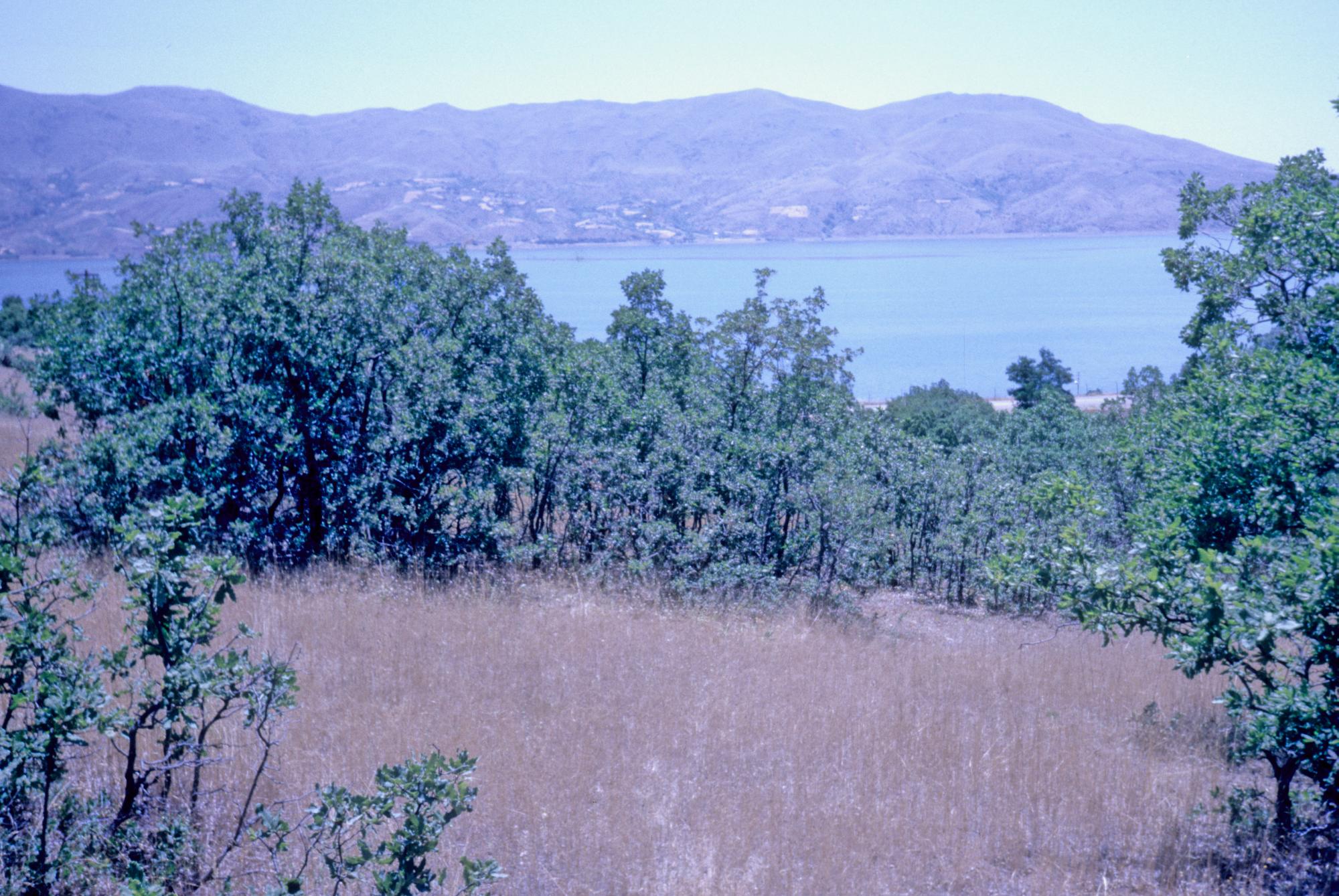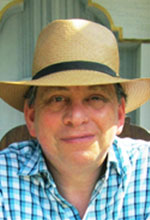Wheat / Triticum spp. / Mark Nesbitt
Wheat
Buğday (Turkish)
Triticum spp.
Mark Nesbitt
When did I fall in love with wheat? I was fortunate to work on a school farm, where the crops were threshed by steam engines, but paid little attention to what was grown. But by the third year of my undergraduate degree in agricultural botany, at the University of Reading, I was so captivated that wheat evolution was the (over-ambitious) subject of my dissertation. The answer lay in the influence of two charismatic individuals: Peter Reynolds, who ran an Iron Age farm in the Hampshire countryside, and Barbara Pickersgill, world expert on Capsicum domestication, from whom I learnt of the elegant studies of chromosomes that deciphered much of wheat evolution in the era before PCR and DNA-based studies.
Wheat is so appealing because its complex evolution is deeply connected to the complexity of human history. After university I had the privilege of 15 years carrying out archaeological fieldwork in Turkey, much of it in the regions so badly affected by the 2023 earthquake. It is here in southeast Turkey that one can wander in dense fields of the same wild wheat species as those gathered for food by foragers before the beginnings of farming 11,000 years ago. Two of these, wild einkorn (Triticum boeoticum) and wild emmer (T. dicoccoides) were among the earliest crop plants in the region, in the form of einkorn (T. monococcum) and emmer (T. dicoccum).
 Stand of wild cereals above Hazar lake, southeast Turkey, c. 1986. Photo: Mark Nesbitt.
Stand of wild cereals above Hazar lake, southeast Turkey, c. 1986. Photo: Mark Nesbitt.
I spent many hours standing at the flotation machine - an oil drum full of water - separating ancient seeds from archaeological soil. Although mostly charred - preserved by contact with fire - both wheat grains and chaff (fragments of the structures that enclose the grains) preserve their form and can be identified. The main groupings in wheat are by chromosome numbers, and whether or not the grains are enclosed by tough bracts (hulled), or the husks are light and are easily broken apart (free-threshing). Examples include diploid wheats (two sets of chromosomes) such as einkorn (hulled); tetraploid (four sets), as in emmer (hulled) and durum wheat (free-threshing), and hexaploid (six sets), as in spelt (hulled) and bread wheat (free-threshing). Peering down the microscope at ancient seeds, I could see how the wheats changed with time and geography, reflecting culinary and agronomic preferences.
 Hulled vs. free-threshing wheats. Left: Hulled wheat (einkorn) – the ear is enclosed by tough husks and breaks up into spikelets; Right: Free-threshing wheat (bread wheat), soft husks, so the ear breaks up into grain and chaff. Photo: Mark Nesbitt.
Hulled vs. free-threshing wheats. Left: Hulled wheat (einkorn) – the ear is enclosed by tough husks and breaks up into spikelets; Right: Free-threshing wheat (bread wheat), soft husks, so the ear breaks up into grain and chaff. Photo: Mark Nesbitt.
At this point, I'd still describe my admiration for wheat as intellectual. My appreciation of it as a beautiful plant came through weekend wanderings in the wheat fields of northern Turkey. Here, in a belt stretching from Thrace, through the Pontic Mountains bordering the Black Sea, to Kars in the far northeast of Turkey, one could (and still can) see einkorn and emmer growing the fields, several thousand years after they went out of use elsewhere. These hulled wheats are highly resistant to the fungal diseases common in wet climates. With fellow archaeobotanist Delwen Samuel, I followed in the footsteps of our mentor, Gordon Hillman. I came to appreciate the depth of knowledge and experimental skills of farmers, and their role in preserving the genetic diversity of wheats in the field.
 Einkorn and emmer fields in Kastamonu province, north-central Turkey, c. 1988. Photo: Mark Nesbitt and Delwen Samuel.
Einkorn and emmer fields in Kastamonu province, north-central Turkey, c. 1988. Photo: Mark Nesbitt and Delwen Samuel.
My work has taken me in other directions, but I long to return to the integration (or in E.O Wilson's terminology, consilience) of archaeological and genetic evidence for wheat domestication and subsequent evolution. It's exciting to see discoveries still arising, for example of the likely domestication of another wild wheat (T. araraticum) into a near-extinct but once widespread wheat crop (T. timopheevi). It's long past time to update my most cited paper, on hulled wheats (1996).
In the meantime, next time you pass a wheat field in summer, stop and enjoy the waves of golden ears sweeping across the field. Look for one that has fallen. Pick it apart, and enjoy the ingenious stacking of grains and chaff. With a hand lens, enjoy the details of the grains and husk. And you too may fall in love with wheat.
Literature
Nesbitt, M. 2001. "Wheat evolution: integrating archaeological and biological evidence," in Wheat taxonomy: the legacy of John Percival, vol. 3, Linnean, Special Issue. Edited by P. D. S. Caligari and P. E. Brandham, pp. 37-59. London: Linnean Society. Download complete book
Nesbitt, M., and D. Samuel. 1996. "From staple crop to extinction? The archaeology and history of the hulled wheats," in Hulled wheats. Proceedings of the First International Workshop on Hulled Wheats. Promoting the conservation and use of underutilized and neglected crops 4. Edited by S. Padulosi, K. Hammer, and J. Heller, pp. 41-100. Rome: International Plant Genetic Resources Institute. Download complete book
Saladino, D. 2021. Eating to extinction: The world’s rarest foods and why we need to save them. London: Jonathan Cape.
Taxonomy of wheat. Wikipedia (Mark’s pet page – an attempt to make a complex subject simple)
Zabinski, C. 2020. Amber waves: The extraordinary biography of wheat, from wild grass to world megacrop. Chicago: University of Chicago Press.
Zohary, D., Hopf, M. and E. Weiss. 2012. Domestication of plants in the Old World : the origin and spread of cultivated plants in south-west Asia, Europe, and the Mediterranean Basin. Fourth edition. Oxford: Oxford University Press.
About the author
 Mark is Senior Research Leader for Interdisciplinary Research at the Royal Botanic Gardens, Kew and a past-president of the Society for Economic Botany. Educated in agricultural botany and archaeology, his over-arching research interest is in people-plant relations over time, especially as documented through historic collections. After 15 years fieldwork in the Near East, his field habitat for the last 20 years has been archives, museums and botanic gardens. He leads a research group at Kew with wide-ranging interests in medicinal plants, dyes, baskets, heritage cereals and much else.
Mark is Senior Research Leader for Interdisciplinary Research at the Royal Botanic Gardens, Kew and a past-president of the Society for Economic Botany. Educated in agricultural botany and archaeology, his over-arching research interest is in people-plant relations over time, especially as documented through historic collections. After 15 years fieldwork in the Near East, his field habitat for the last 20 years has been archives, museums and botanic gardens. He leads a research group at Kew with wide-ranging interests in medicinal plants, dyes, baskets, heritage cereals and much else.
The Society for Ethnobotany is open to researchers, practitioners, and enthusiasts of ethnobotany and economic botany.
The 2026 SEB Annual Meeting will take place in Montpellier, France, from May 31-June 4th!
If you have an interest in ethnobotany or economic botany you can become a member of the Society for Ethnobotany.
If you are a member of the Society for Ethnobotany and would like to contribute a Favorite Plant please contact Blair Orr, blairorr@ymail.com. (Note: ymail, not gmail.)
